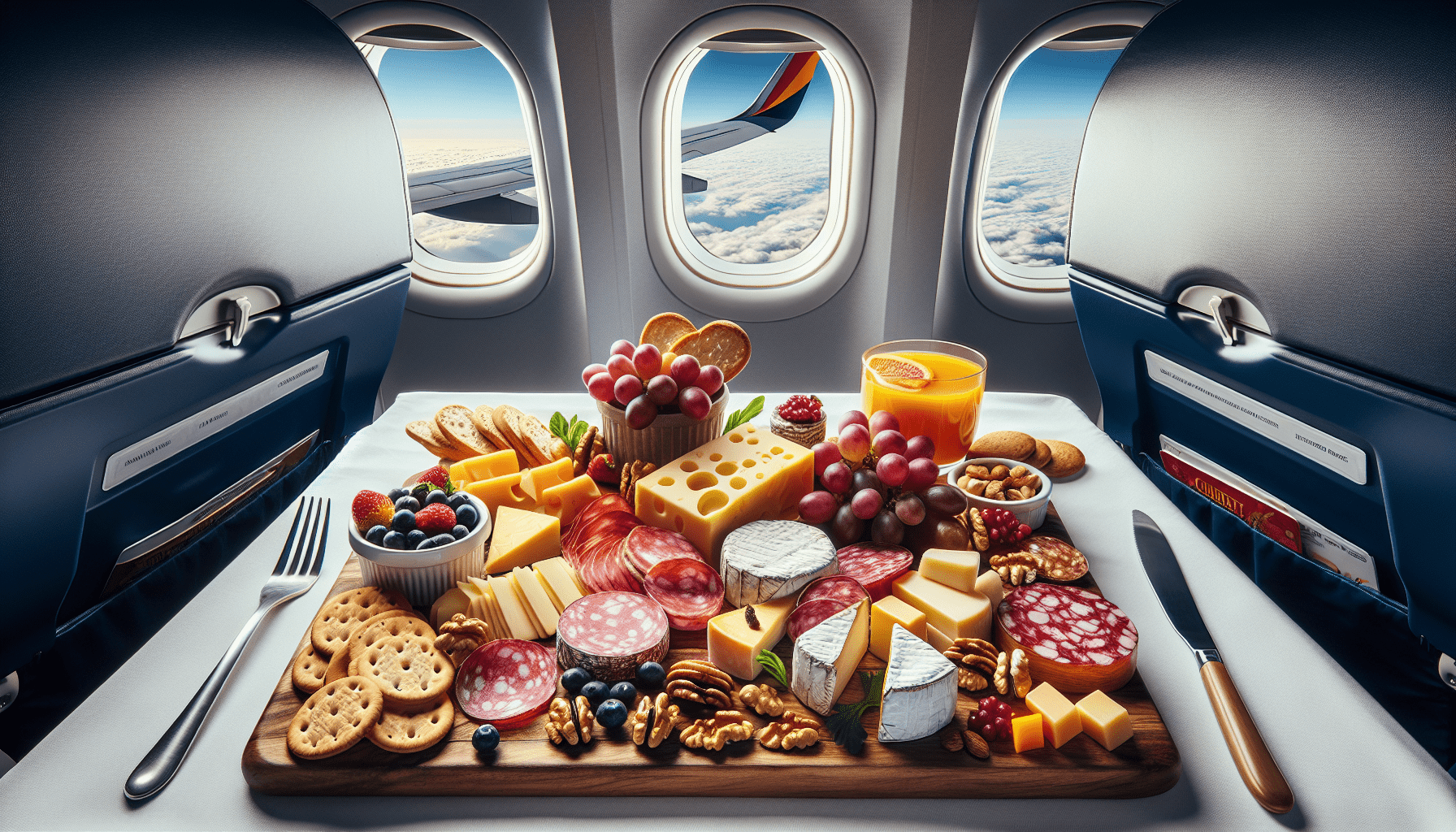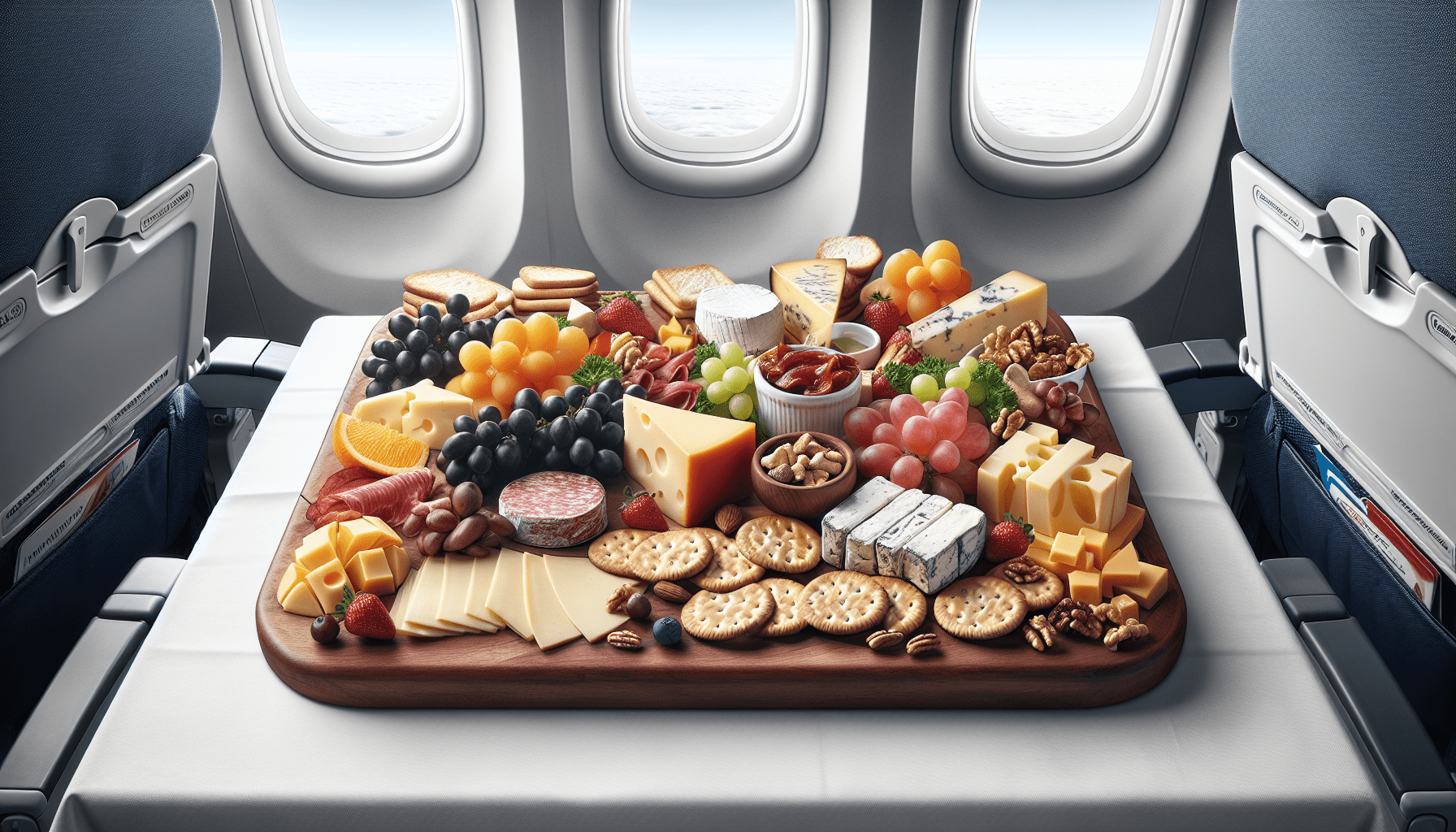NISHEL Women Travel Toiletry Bag, Pink, Medium
$16.19 (as of April 6, 2025 11:38 GMT +00:00 - More info)Have you ever wished you could elevate your in-flight snacking experience without splurging on a first-class ticket? It’s possible, and it’s surprisingly delicious. Imagine this: a charcuterie board, packed with an assortment of cheeses, cured meats, and delightful snacks — all enjoyed at 30,000 feet. Intrigued yet? Well, brace yourself, because it’s not just a lofty dream; the TSA actually allows you to bring a homemade charcuterie board on your next flight. Let’s explore how you can create a mouthwatering, portable feast ready for those tray tables.

Shop These Accessories for a Comfortable Trip
The TSA’s Cheesy Revelation
You might think the Transportation Security Administration (TSA) is here to crush your snacking dreams with their rigid rules and regulations. However, they’ve actually blessed our taste buds with the green light to bring certain solid foods onboard. A cheeky Instagram post by TSA confirmed that cheese and meats are totally fine to carry through the security checkpoint. The clever caption read, “You better brie-live olive it can board the plane with you! So whatever solid food meats your needs go ahead and pack it.”
In essence, as long as your food items are solid, the TSA is pretty chill about letting them through. This means you’ve got plenty of room for creativity when assembling your charcuterie board.
Crafting Your In-Flight Charcuterie Board
Creating a charcuterie board for a flight isn’t quite the same as doing so for a dinner party. You’ll need to think about factors like refrigeration, smell, and convenience. Here’s how to navigate it all without losing your cool.
The Cheese Dilemma
Cheese lovers rejoice! You can bring cheese on a plane, but be strategic about it. Opt for aged and hard cheeses with low moisture content, as these will survive the lack of refrigeration better than your Brie or Camembert. Think cheddar, gouda, or Parmesan.
However, steer clear of anything too aromatic—trust me, your fellow passengers will not be thanking you for bringing a pungent Limburger on board.
Meat Considerations
Cured meats are a fantastic choice. They generally don’t need refrigeration and have a long shelf life. Salami, pepperoni, and prosciutto are excellent options. If you’re vegetarian or just looking to diversify, consider plant-based alternatives, which can be equally delicious and less likely to spoil.
Crackers and Bread
Most crackers will travel just fine, especially if you keep them in their original packaging to prevent them from getting soggy. Bread is another great option — slices of baguette or even pieces of pita can elevate your snack experience. Bread might be slightly moist, but the TSA won’t give you a hard time about it.
Sweet and Savory Accents
Balance is key to a good charcuterie board. Add some savory accents like olives or pickles (but drain the liquid first), nuts, and sliced veggies. Fresh fruit is great too, but remember that if you are flying from Hawaii, Puerto Rico, or the U.S. Virgin Islands to the U.S. mainland, you can’t bring fresh fruits. Dried fruit and dehydrated veggie snacks make excellent alternatives.

Shop These Accessories for a Comfortable Trip
Packing Your Charcuterie Board
Packing a charcuterie board for a plane ride can be tricky, but with a bit of ingenuity, you’ll be snacking like a pro.
Travel-Friendly Containers
A tackle box or similar plastic organizer is a genius way to sort and store your ingredients without making a mess. These containers have multiple compartments, perfect for keeping everything neat and easily accessible when you’re ready to eat.
Handling Potential Hazards
Be very careful with anything that could be mistaken for a liquid. This includes creamy condiments, dips, spreadable cheeses, hummus, and even honey. TSA considers these to be liquids, which means they need to be in containers no larger than 3.4 ounces (100 milliliters). Err on the side of caution and prioritize solid foods to minimize any security hiccups.
Knife Safety
Most knives won’t make it through TSA security—sharp objects are a no-go. However, plastic cutlery and butter knives are usually fine. Wooden toothpicks are also allowed, making them a handy option for spearing bites of meat and cheese.
Alcohol Considerations
If your ideal charcuterie experience involves a glass of wine or bubbly, remember alcohol is subject to TSA’s liquid rules. You can only bring containers up to 3.4 ounces. To avoid issues, order a festive drink from the in-flight beverage cart after takeoff.
Ingredients to Include
Wondering what to pack for your charcuterie board? Here’s a handy list to get you started.
| Category | Examples |
|---|---|
| Cheeses | Aged cheddar, gouda, Parmesan |
| Meats | Salami, pepperoni, prosciutto |
| Crackers | Ritz, Triscuits, pita chips |
| Bread | Baguette slices, pita pieces |
| Savory | Olives (drained), pickles (drained), nuts |
| Sweet | Dried fruit, chocolate |
| Veggies | Carrot sticks, cucumber slices |
Remember the Liquid Rule
For creamy and spreadable items such as dips or hummus, ensure they are in containers no larger than 3.4 ounces. It’s best to pack these separately in your quart-sized liquid bag for easy access during security checks.
Be Mindful of Fellow Passengers
Etiquette is key when snacking on a plane. That pungent blue cheese might be heaven for you, but it could be a nightmare for someone sitting nearby. Consider the smell and potential messiness of your ingredients. Hard, mild-smelling cheeses and well-sealed containers can keep you in everyone’s good graces.
Sensitivity to Allergies
Remember, you’re sharing the plane with other passengers, some of whom may have food allergies. Be mindful of common allergens like nuts and make sure your snack doesn’t pose a risk to those around you.
Summary of Key Points
Here’s a quick recap to ensure your in-flight charcuterie board is a smashing success:
- Opt for Solid Foods: Stick to solid foods like hard cheeses and cured meats.
- Watch the Smells: Choose non-pungent items to keep the cabin a happy place.
- Be Smart About Containers: Use a tackle box or plastic organizer for neatness.
- Respect Liquid Limits: Keep dips and spreads in containers no larger than 3.4 ounces.
- Use Safe Cutlery: Stick to butter knives, plastic cutlery, and toothpicks.
Elevate Your Travel Experience
Next time you prepare for a flight, give your snacking game an upgrade with a carefully curated charcuterie board. It’s not just about the food; it’s about making your journey more enjoyable and elevating your travel experience. Whether you’re in economy or first class, having a delicious, well-organized snack can make all the difference. Happy snacking!
Shop These Accessories for a Comfortable Trip






